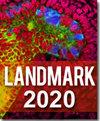Neovascular Remodeling and Subretinal Fibrosis as Biomarkers for Predicting Incomplete Response to Anti-VEGF Therapy in Neovascular Age-Related Macular Degeneration.
IF 3.1
4区 生物学
Q2 Immunology and Microbiology
引用次数: 1
Abstract
PURPOSE To compare the progression of neovascular remodeling and subretinal fibrosis in neovascular age-related macular degeneration (NVAMD) after anti-vascular endothelial growth factor (VEGF) therapy. METHODS Twenty eyes from 20 patients with subretinal fibrosis complicating NVAMD were retrospectively reviewed. All patients complied with at least three consecutive monthly intravitreal treatments and final follow-up visit at 12 months after the initial anti-VEGF treatment of aflibercept or ranibizumab. Using optical coherence tomography angiography (OCTA), the central macular thickness (CMT), microvascular density in the superficial capillary plexus (SCP), deep capillary plexus (DCP), choroidal neovascularization (CNV) lesions, as well as subretinal fibrotic lesions were compared between baseline and final visit. RESULTS The mean number for anti-VEGF injections was 4.40 ± 0.88 during the 12 months of follow-up. There was no significant difference in best-corrected visual acuity (BCVA) and vascular density in SCP and DCP (p > 0.05) between baseline and final follow-up. The CMT decreased from 434.95 ± 87.62 μm at baseline to 365.15 ± 78.92 μm at final visit (p = 0.02). Compared with the baseline, the fine vessels, such as capillary tufts, regressed and the relative density of CNV lesion decreased by 19.12% (p = 0.01), while the relative density of the subretinal fibrosis increased approximately 1.21-fold (p = 0.03) at the final follow-up. CONCLUSIONS The progression of neovascular remodeling and subretinal fibrosis may serve as biomarkers to predict incomplete response to anti-VEGF therapy in patients with NVAMD. Subretinal fibrosis complicating NVAMD remains a major obstacle for the management of NVAMD, and anti-VEGF treatment is a potential therapeutic strategy to target neovascular remodeling and subretinal fibrosis as either an additive or alternative therapeutic approach for NVAMD.新生血管重塑和视网膜下纤维化作为预测抗vegf治疗在新生血管性年龄相关性黄斑变性中不完全反应的生物标志物。
目的比较抗血管内皮生长因子(VEGF)治疗新生血管性年龄相关性黄斑变性(NVAMD)后新生血管重构和视网膜下纤维化的进展。方法对20例视网膜下纤维化合并NVAMD患者的20只眼进行回顾性分析。所有患者均接受了至少连续三个月的玻璃体内治疗,并在阿非利塞普或雷尼单抗抗vegf治疗后12个月进行了最后一次随访。采用光学相关断层血管造影(OCTA),比较基线和终诊时黄斑中央厚度(CMT)、浅毛细血管丛(SCP)、深毛细血管丛(DCP)微血管密度、脉络膜新生血管(CNV)病变及视网膜下纤维化病变。结果随访12个月,平均抗vegf注射次数为4.40±0.88次。SCP和DCP的最佳矫正视力(BCVA)和血管密度在基线和末次随访时无显著差异(p > 0.05)。CMT由基线时的434.95±87.62 μm降至末次随访时的365.15±78.92 μm (p = 0.02)。与基线相比,毛细血管丛等细血管退化,CNV病变相对密度下降19.12% (p = 0.01),而视网膜下纤维化相对密度增加约1.21倍(p = 0.03)。结论新生血管重构和视网膜下纤维化的进展可作为预测NVAMD患者抗vegf治疗不完全反应的生物标志物。视网膜下纤维化合并NVAMD仍然是NVAMD治疗的主要障碍,抗vegf治疗是针对NVAMD的新血管重构和视网膜下纤维化的潜在治疗策略,可以作为NVAMD的附加或替代治疗方法。
本文章由计算机程序翻译,如有差异,请以英文原文为准。
求助全文
约1分钟内获得全文
求助全文
来源期刊

Frontiers in Bioscience-Landmark
生物-生化与分子生物学
CiteScore
3.40
自引率
3.20%
发文量
301
审稿时长
3 months
期刊介绍:
FBL is an international peer-reviewed open access journal of biological and medical science. FBL publishes state of the art advances in any discipline in the area of biology and medicine, including biochemistry and molecular biology, parasitology, virology, immunology, epidemiology, microbiology, entomology, botany, agronomy, as well as basic medicine, preventive medicine, bioinformatics and other related topics.
 求助内容:
求助内容: 应助结果提醒方式:
应助结果提醒方式:


